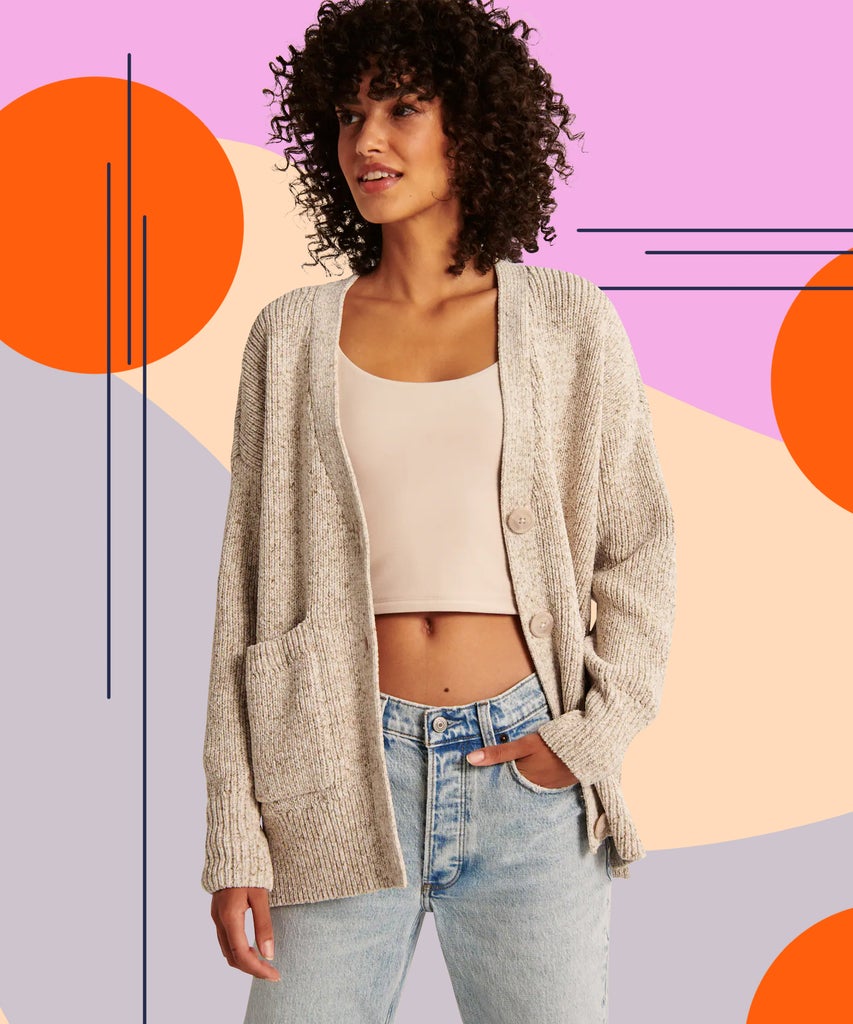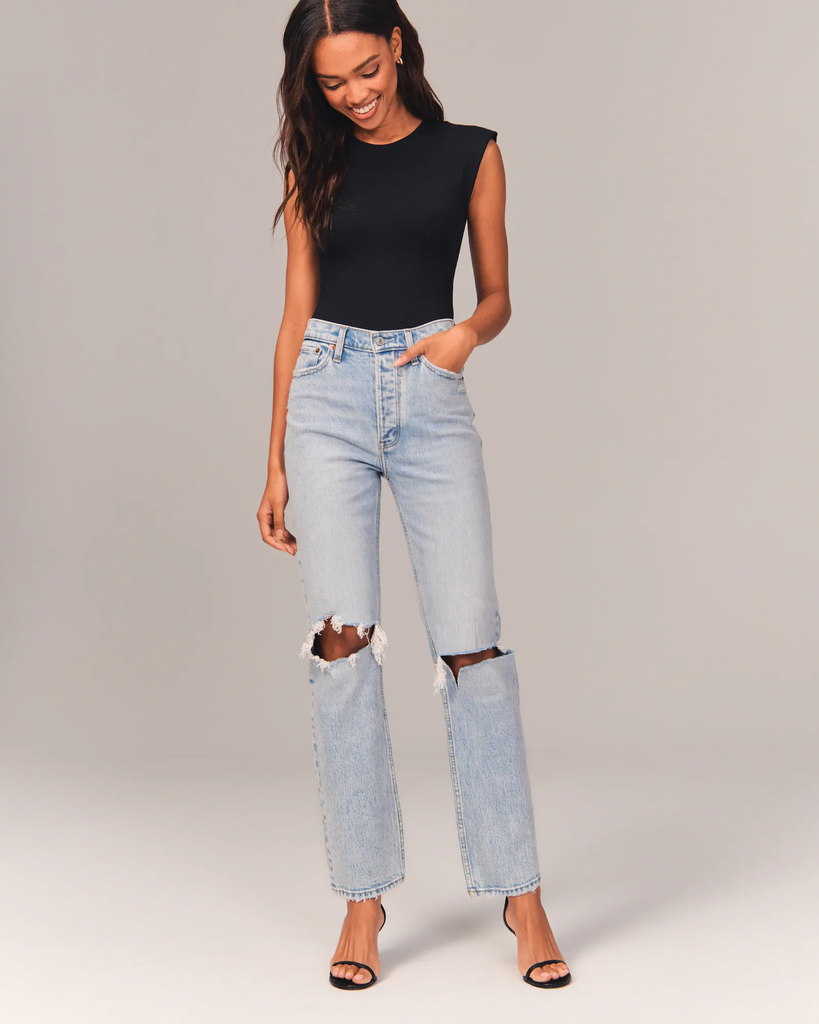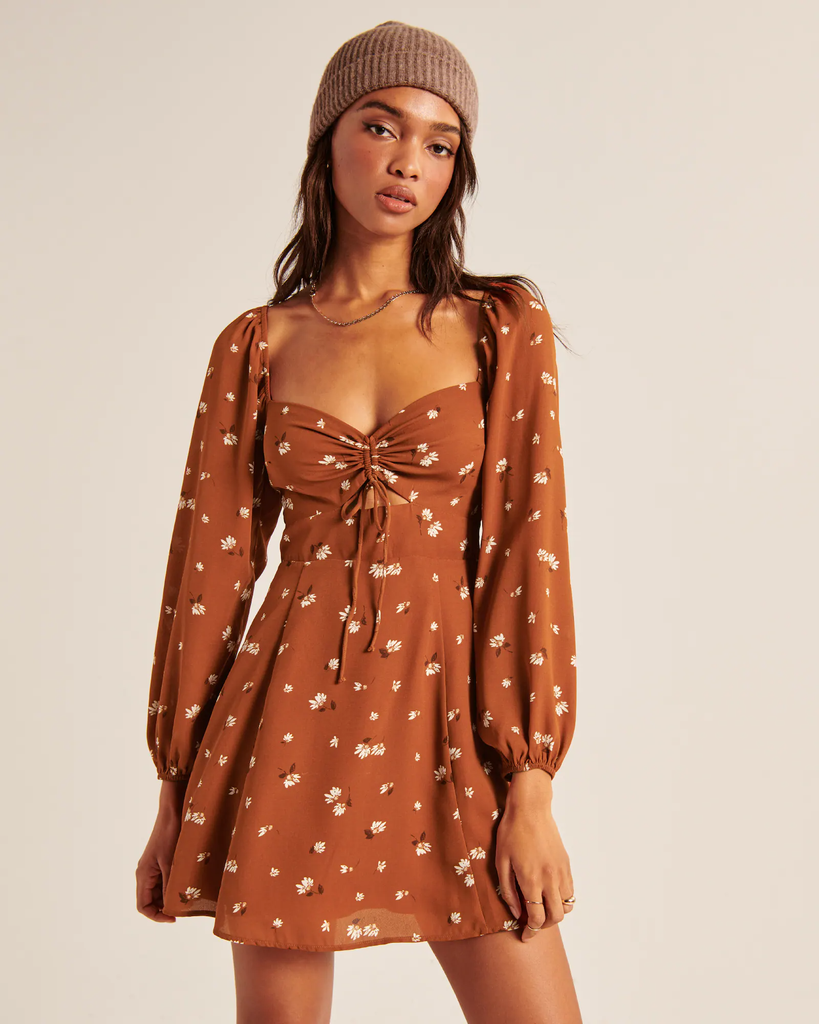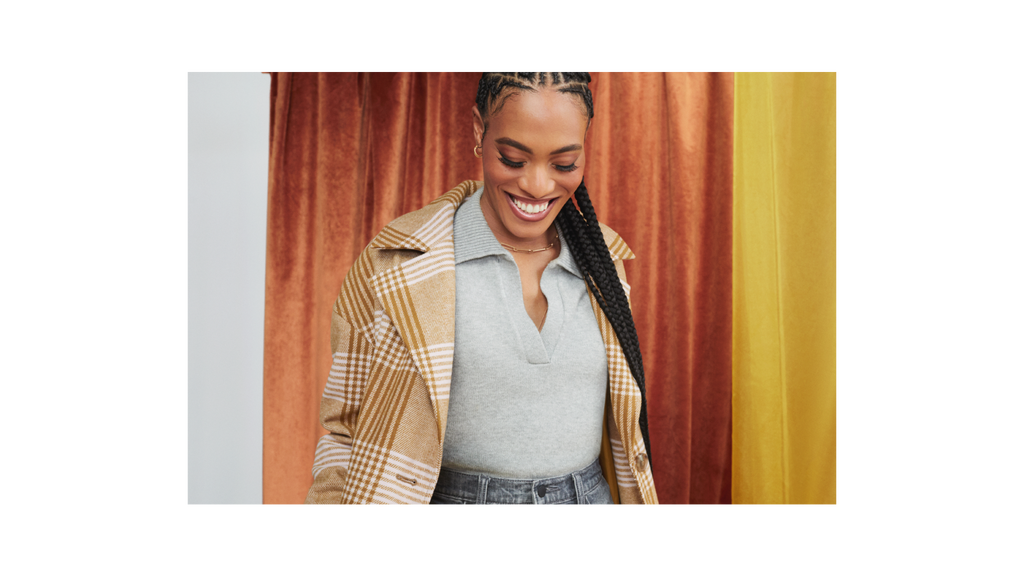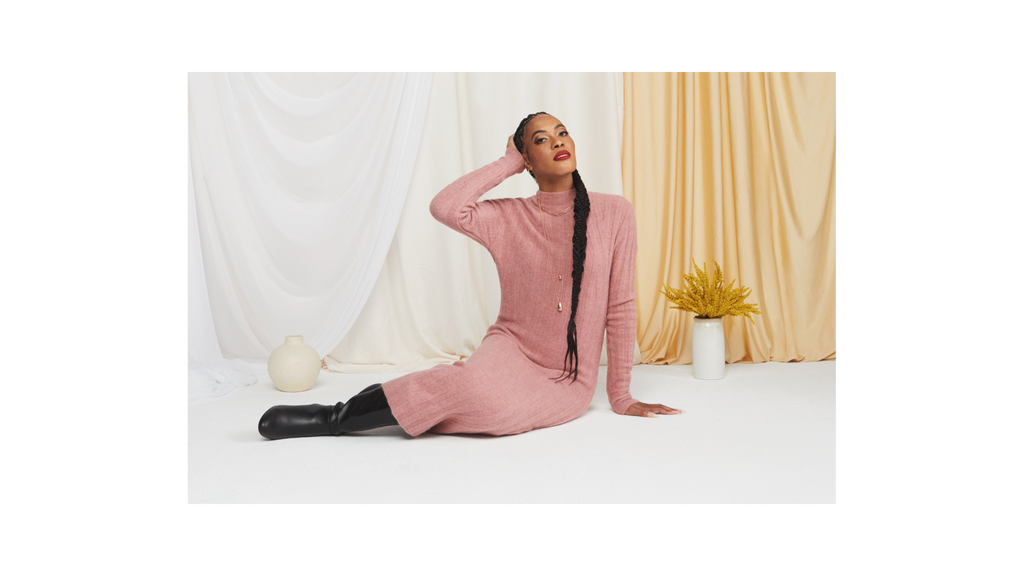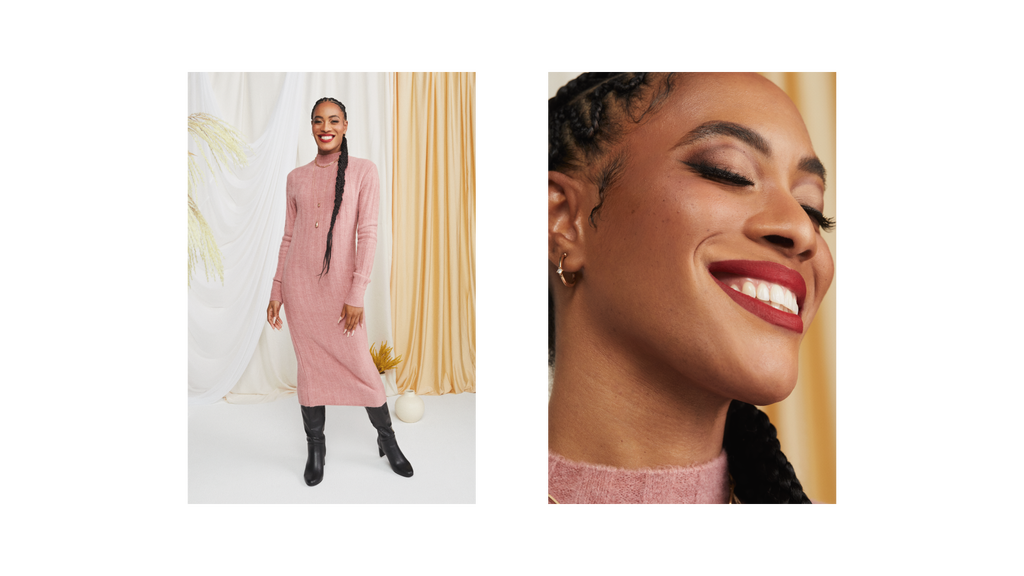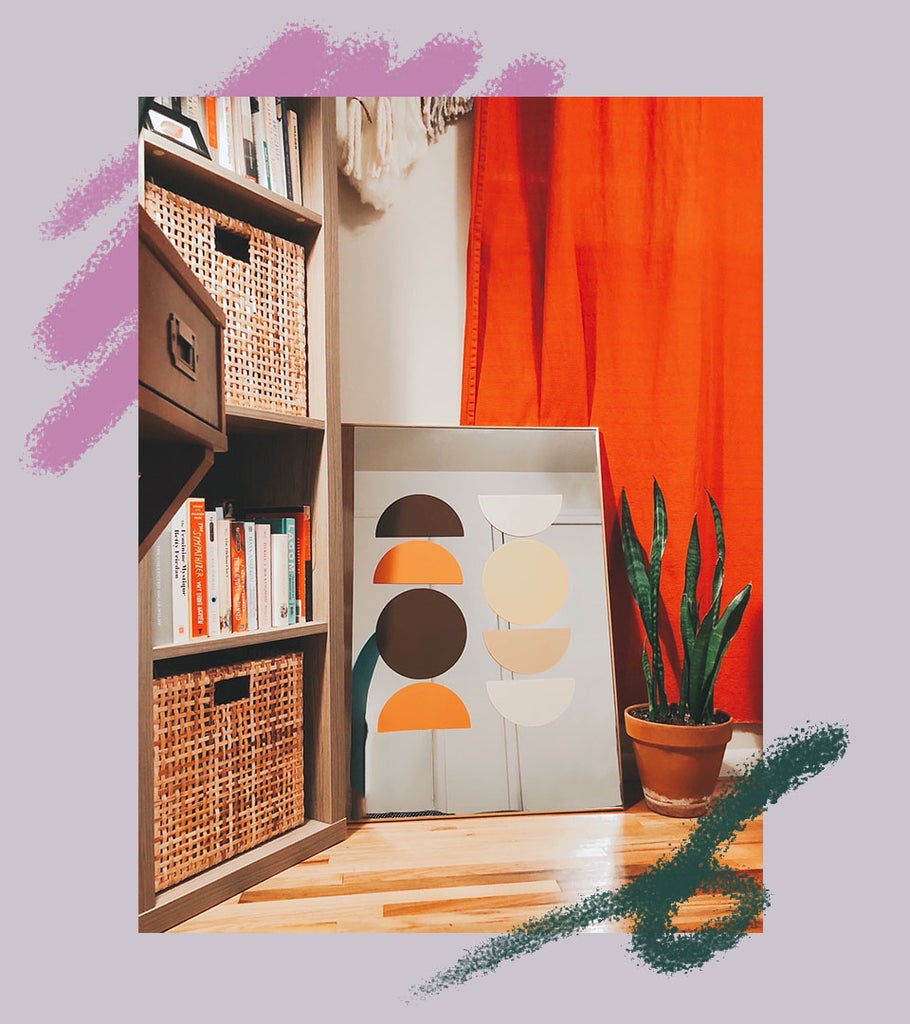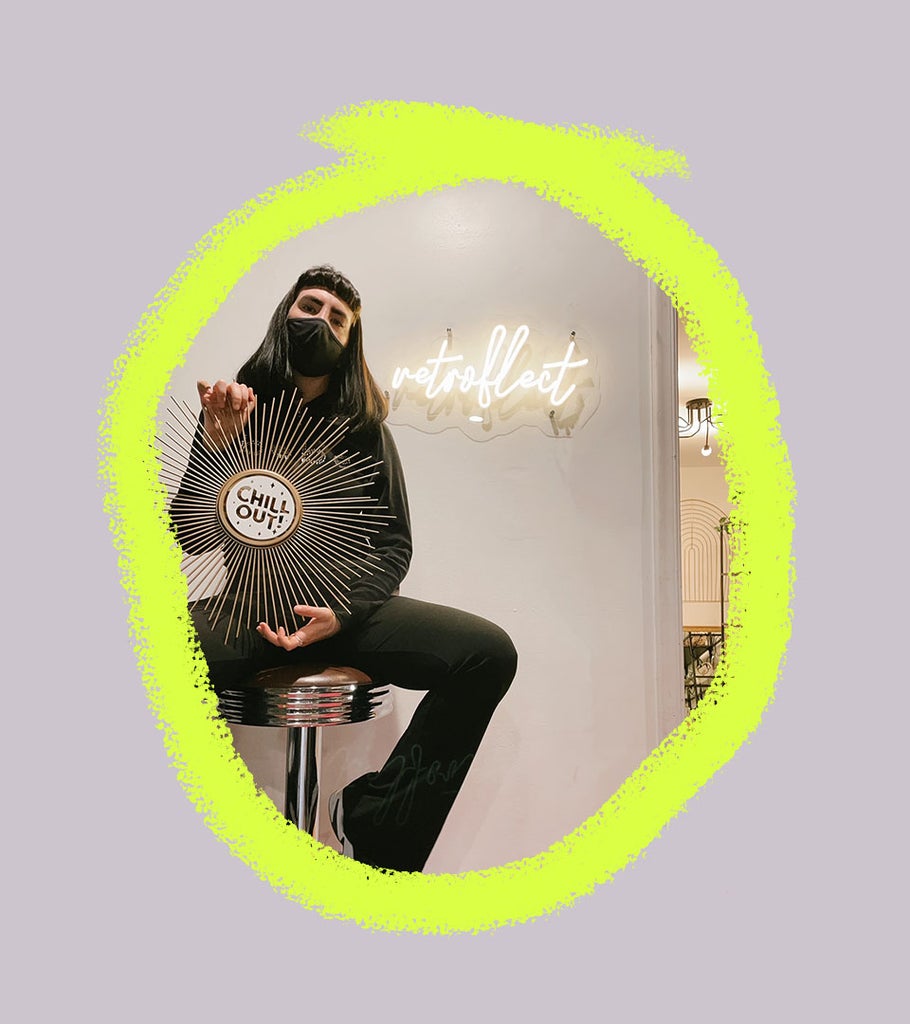R29 is proud to partner with Cricut, to explore the ways independent entrepreneurs are transforming modes of creativity into thriving small businesses.
Back in prehistoric times, when thrifting was relegated to brick-and-mortar venues only, the very act of second-hand shopping was marked by serendipity. It was a “stumble upon” economy whereby some of us were eternally luckier than others. In the present tense, though — when “thrifting” implies Poshmark search terms, Depop “influencers,” and certificates of authentication from The RealReal — the whole project of resale is an indisputably calculated affair. And for veteran thrift dealer Lucy Bergstrom, that’s not necessarily a bad thing.
“When I was young, thrifting wasn’t cool,” she says. “I remember being so embarrassed about the fact that I purchased all my clothes second-hand. But in recent years, it feels like we’ve totally turned that notion on its head — and in a big way, we have social media to thank.”
In spite of her young reticence, Bergstrom grew to love the process of combing through thrifted garments. And by the time she went to college to study fashion merchandising — and familiarized herself with the looming evils of fast fashion — she was firmly devoted to the project of opening a vintage shop of her own with sustainability at the heart of its mission. And thus, Moby Thrift was born: a roving thrift store housed in an airstream trailer in Utah, helmed by Bergstrom and her husband Drew.
At the time, in 2005, IRL thrift shopping was simply the standard. There was no Facebook Marketplace, there were no “Depop Girls” — and while vintage stores were using Instagram as a marketing tool, on the whole, they weren’t using their social media platforms to actually sell their products. But Bergstrom noted that this felt like a missed opportunity. “The point of being mobile as a store was to reach as many people as possible, but the more I thought about it, the more I realized how many more people we could reach online — so we started selling on Instagram,” she says. “Our home essentially became a shipping locker. You couldn’t see an inch of it under all the vintage clothes.”
As a mode of guerilla marketing, in the hopes of getting eyes on their Instagram shop, Bergstrom and her husband partnered with a number of local influencers who were vying to sell their clothes, and offered to take over the project. In exchange for promotion on the influencers’ feeds, Moby Thrift would sell, package, and ship their clothes for them. “We’ve never paid for an ad, but those influencers alone earned us tens of thousands of followers right at the get-go — and we realized we really could run a thrift store on Instagram.”
At present, the shop’s modes of operation have shifted slightly. Beyond Instagram sales (which are still thriving), you can also shop Moby Thrift’s goods in a dedicated brick-and-mortar location in Provo, Utah — one of the first vintage retail venues in the state. And while they’ve run out of time (and space) to hawk influencer’s clothing, they have added some new features to their inventory: Beyond second-hand goods, they’ve also been customizing vintage T-shirts and adding creative detailing to repurposed garments through the use of their trusty, beloved Cricut smart cutting machine.
As if that’s not enough, in 2020, Bergstrom also found the time to launch a second business on the side: Retroflect. Born out of the same sustainability mission, the newly formed venture is all about turning vintage mirrors into works of art. Using her own handmade Cricut stencils, Bergstrom paints, draws, or illustrates on said mirrors, repurposing the antique goods as custom works of art. And in the vein of marketing, she’s found a new digital platform to boost sales: “TikTok has been a major help with Retroflect,” she says. “When we were getting started, I posted a video about my process — and it instantly went viral. It drove so many sales. So, now I’m just trying to keep that momentum going.”
In the meanwhile, as our social media landscape continues to shapeshift — and in turn, so too do our modes of buying and selling vintage garb — we sat down with Bergstrom to chat about the future of thrifting. Ahead, learn more about customized vintage, TikTok marketing, and the ins and outs of a social media thrift economy.
Where do you source the items you sell?
“We started off just buying in bulk from other thrift vendors — in person, or on Craigslist, or on eBay. We’d purchase these huge bundles of stuff, and we’d spend hours and hours every day digging through giant stores, trying to find the pieces we thought our customers would be interested in. We probably did that for about a year before we started accepting large portions of our inventory from influencers.
“Now, since Drew is doing most of the buying for Moby Thrift, he’s really become part of a thrifting community. He makes trades with other re-sellers, or he sources through vintage-forward communities on Facebook Marketplace. We attend the occasional estate sale. And then, we customize some pieces of our own.”
What kinds of custom pieces are you making?
“Of late, we’ve started recreating vintage style T-shirts. Last year, we came out with a vintage-style Princess Diana shirt by silk screening second-hand tees — and it was so popular, it sold out several times. But for the most part, we’re adding our own custom tags to garments with our Cricut machine, designing labels on baseball cards, and adding little personal bits of stitching or color on pieces we’re feeling excited about. That part of the business is what feels really special: Thanks to Cricut, we get to add such a unique, individualized touch to everything we make. We leave our mark.
“Then, in the home goods realm, I’m taking vintage mirrors and other used home goods and painting or drawing onto them with homemade Cricut stencils, I recently made a pair of these twin, giant ‘70s-style mirrors with rainbows stretching across, and I totally love how they turned out. It’s just been such a fun process because we get to exercise all this creativity without going against our sustainability mission. We just love bringing that individuality to people’s homes and wardrobes while also taking care of the planet.
“That said, it’s really, really hard to scale something on a custom level when you’re as small of an operation as we are. So, often, we’ll have these ideas, but we just won’t have the means to produce enough quantity to keep up with demand. But regardless of what happens on the custom end, we don’t want to lose the vintage feel. We still want to bring things back from the dead — but we also want to add some little personal flair. So…we’re still in the trial-and-error phase of executing that.”
What was the process of opening your brick-and-mortar store like?
“We actually opened in the midst of the pandemic — this past December. Of course, we were nervous about it — but we knew we’d follow precautions, and we’d been making a steady income throughout the whole quarantine period since we’d always been a social media-first vendor. And we kind of felt like it could be a nice soft start — we could see how it went having the brick-and-mortar space without getting too overwhelmed, since we’d only been online for years.
“That said, it’s something we had wanted for a really long time. Over the past few years, we’ve done a ton of pop-up shops — almost monthly. And that’s where a huge quantity of our sales were coming from. The problem was, our entire house was just full of inventory. So it was kind of nice to take our time moving our full inventory into this new space. But we don’t want to be open all the time — we kind of want to treat this space like a more formal pop-up. We want to be open around two days a week to still preserve that special, pop-up feel. And last October, when we stumbled upon this perfect space, we felt like we had to take it. Even though it was during the pandemic, and we weren’t making as much money as we were used to, we just couldn’t let this opportunity pass us by.”
Do you still sell on Instagram in addition to your brick-and-mortar shop?
“We do use Instagram to sell, still — and it’s still where most of our sales are coming from. We have a website as well, and we sell plenty of things in stores, but we can just reach so many more people online. Around once a week, we’ll do an IG story sale where we’ll just throw a bunch of clothes up on our story, and people message us if they want to purchase. Then, our website is mostly for rarer, more expensive collector’s items. Things that we don’t expect to casually sell in stores or on Instagram. And this applies both to our clothing and our home goods. It’s just kind of a fully combined enterprise.”
Can you tell me about your experience using TikTok as a marketing tool, in addition to Instagram?
“It’s been a journey, and I’m totally still learning. It definitely has its ups and downs. The first Retroflect TikTok post I made blew up, and I got 6,000 followers instantly, and that drove so many sales. But then, I felt like I couldn’t quite keep up! It’s hard to churn out TikTok content the way you would on a different platform.
I still haven’t totally matched that initial video, but it was this great reminder for me that people like this content, they like this concept, they like what I’m doing. That particular video was all about walking through my DIY method, from the initial Cricut processes through the final product, so I know that works. Then, in the broader sense, I’ve really re-focused myself on video. I’m spending way more time making Reels or giving IGTV a shot because I think video, as a format, is the future of social media — so we’re going to have to get on board if we’re going to keep up. It’s just so much trial and error. but like, if you go viral, it could literally change your life. But I will say, making TikToks feels like it could be a whole, full-time job. It’s crazy. I’m so admiring of the folks who make it look so easy to make great stuff.”
Do you think this pivot to social media thrifting is a good thing in the long run? Is it changing the landscape of vintage shopping for the better?
“It’s funny, in a way, I feel like thrifting in its current mode has developed the opposite stigma it had while I was growing up. It used to be sort of uncool and inaccessible, and now, there’s this narrative that resale is actually becoming too privileged. Often, I’ll see girls on Instagram showing off their ‘thrift hauls’ — and sometimes they’ll resell from there. Sure, there are definitely parts of that that aren’t ideal. Of course, influencers shouldn’t be sourcing from spaces that are meant for low income families, but at the same time, the world will literally never run out of clothing. The fast fashion industry has made that entirely impossible. So the more people who can recycle and who can resell, the better. I just love the idea of slowing things down — and anybody who resells is, in a way, contributing to slowing down the fashion market.
“Of course, there are things that should change. We should absolutely be responsible about where we’re sourcing from. And I do think people get a little bit crazy with their prices — your standard, second-hand shirt doesn’t need to cost $50. But on the whole, I think that this whole realm of social media has done so much incredible work to destigmatize buying your clothing second-hand, and extending the lifecycle of a garment, and in the long run, I think it’s really the best offense against fast fashion that we have.”
Is there anything you wish the social media thrifting landscape did differently?
“As folks with public-facing fashion platforms, I think we need to find ways of becoming more democractic. Of course there will always be vendors of rare or designer goods, but I think social media provides a really cool opportunity for us to reach all different demographics with curated thrift. That’s one of the cool things about being a rare breed of thrift store in Utah — I feel like we’re drawing in a unique crowd. But in the future, I’m really hoping that Instagram initiates something similar to Facebook marketplace, where you don’t need to have a following or be ‘in the know’ to buy and sell exciting used goods. For most of Gen Z, it seems like Facebook or Craigslist are kind of lost relics, so I feel like we need that kind of service on Instagram.
“In addition to that, though, I would love for us all to spend more time on education. There’s so much false information disseminated so quickly by all kinds of brands, and I think we’d all be more conscious consumers if we really understood what was happening around us in the fast fashion industry. And this goes beyond fashion — it applies to your mattress, your appliances, your utensils, and so on. And if people really understood how easily they could purchase everything second-hand, I think they’d be doing it way more.”
Like what you see? How about some more R29 goodness, right here?
